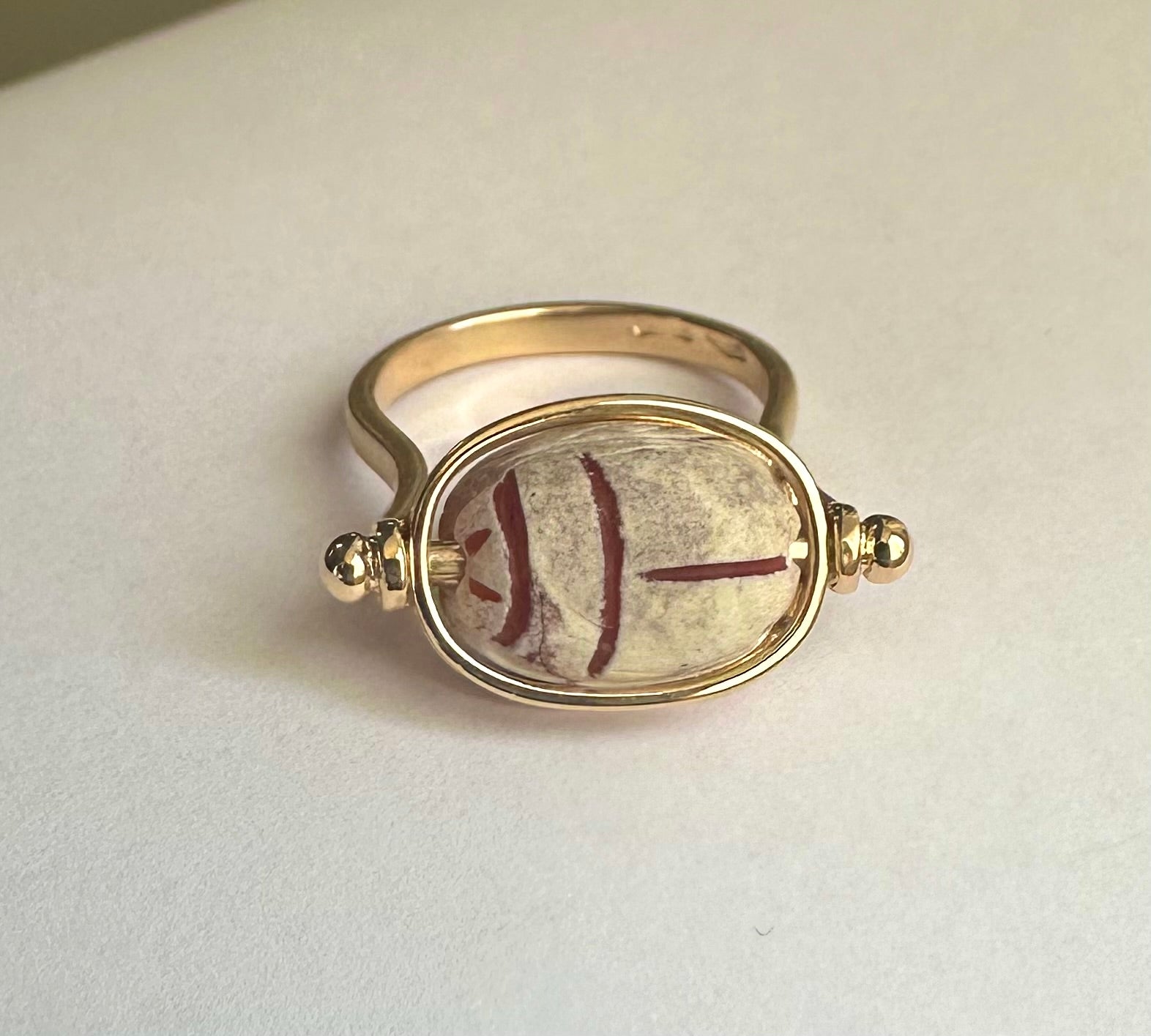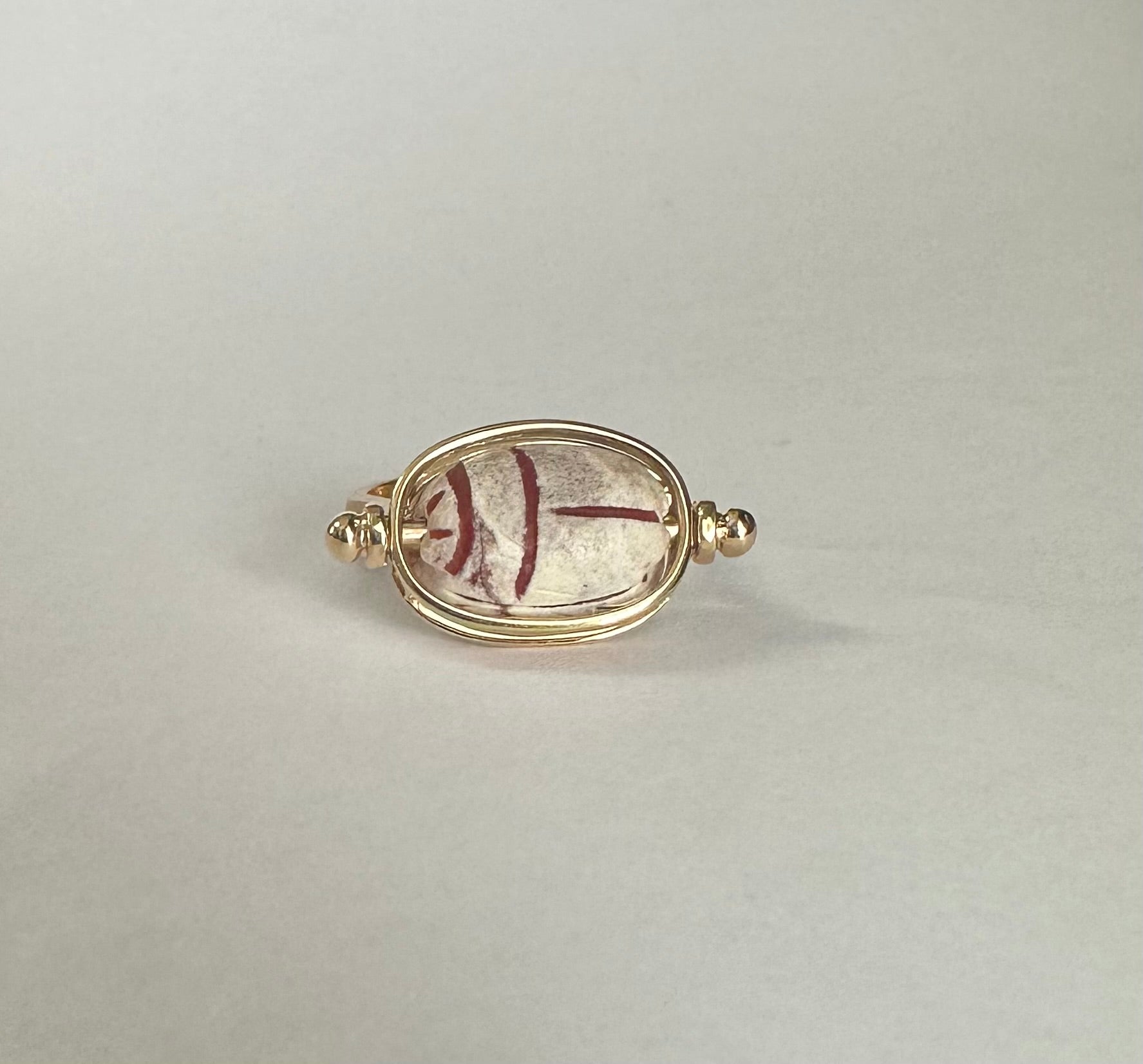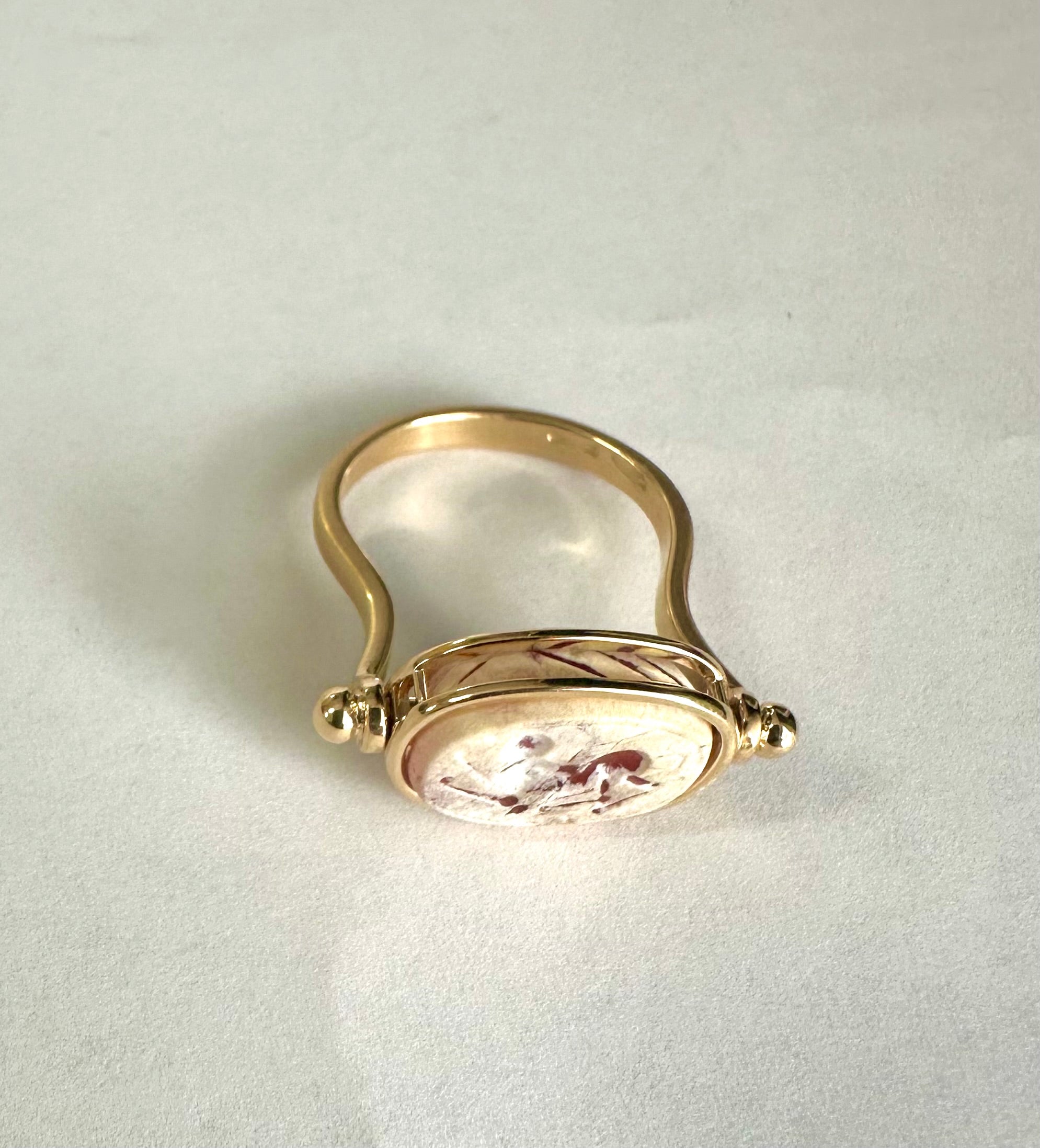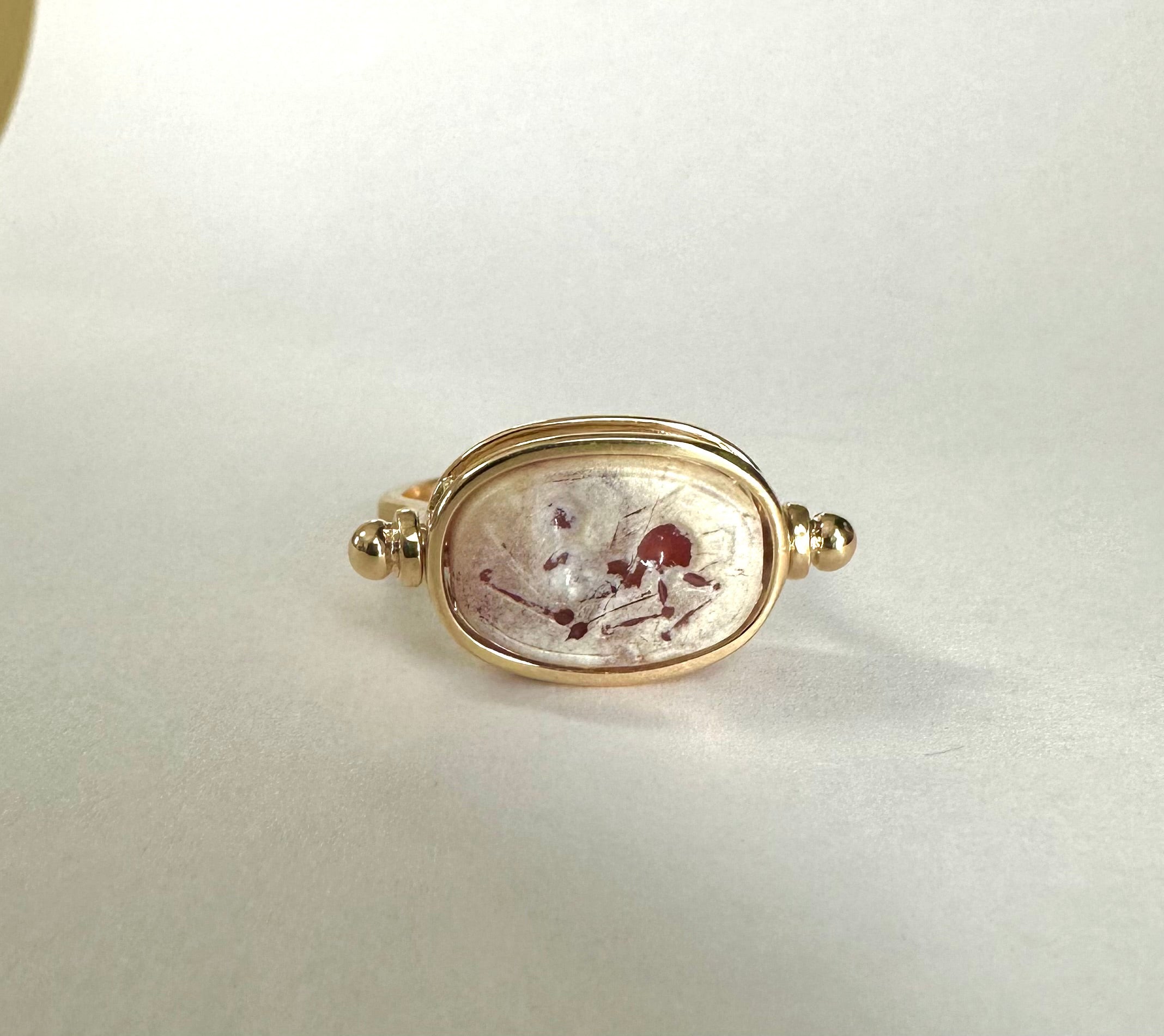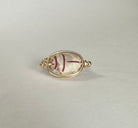(Private Listing) Scarab carved on burnt carnelian (6th-4th century BC); Sphinx engraved on the flat surface
The Egyptian scarab, known as the kheperer (a term similar to that of the god Khepri, representing the sun), held significant power as an amulet since the Tinite period, imbued with a magical-apotropaic function facilitating eternal rebirth, transformation, and the assurance of favorable events alongside a perpetual enhancement of intuitive and spiritual faculties. The impact of this creature on the religious and cultural history of ancient Egypt is so profound that it has become a quintessential symbol of the civilization, akin to the pyramids or Tutankhamun's mask.
During the VI dynasty, the earliest amulets emerged, initially devoid of descriptions and possessing simplicity. Their widespread usage burgeoned notably during the New Kingdom (1570-1085 BC), with adornments such as inscriptions and drawings on the flat abdomen, akin to this scarab. In particular rituals, priests employed the scarab, immersing it in the white milk of a black cow before burning it, symbolizing the invocation of gods whose magical light dissipated the darkness of imbalanced forces. Revered as a "divine heart," the scarab's potency extended to perceiving the invisible and guiding the transition from earthly to eternal life.
Moreover, officials and high-ranking individuals utilized the scarab as a seal, often affixed to rings, to secure documents, amphorae, and other items requiring safeguarding.

